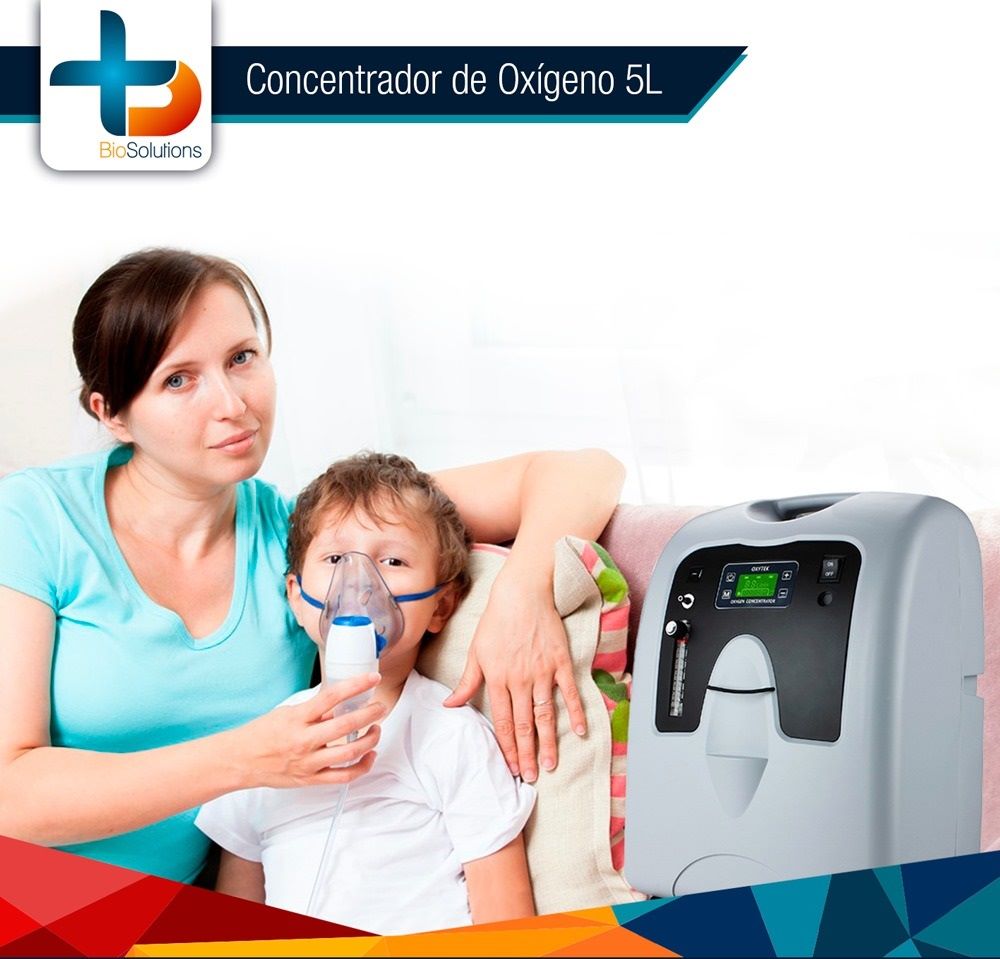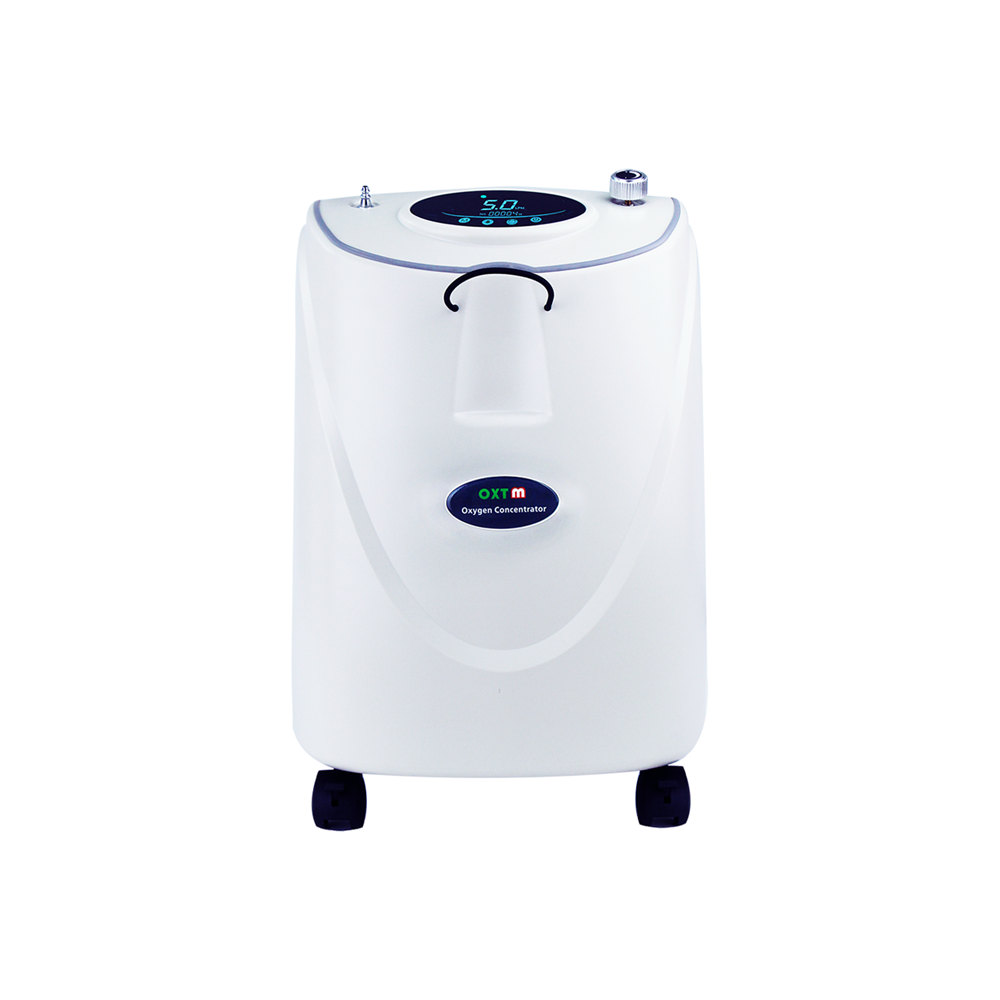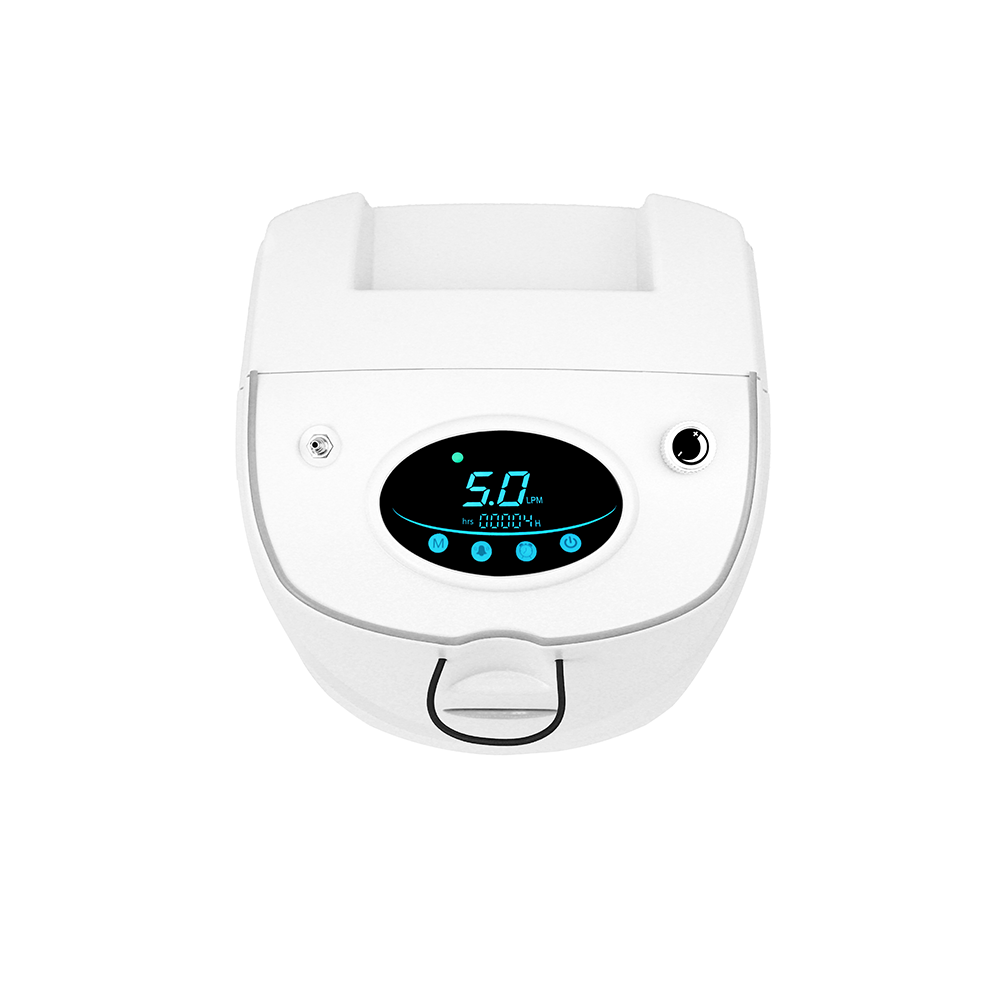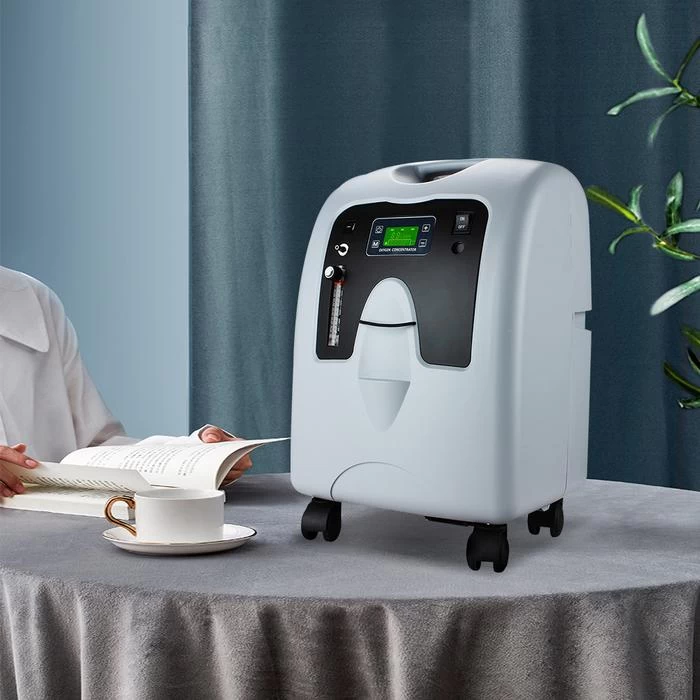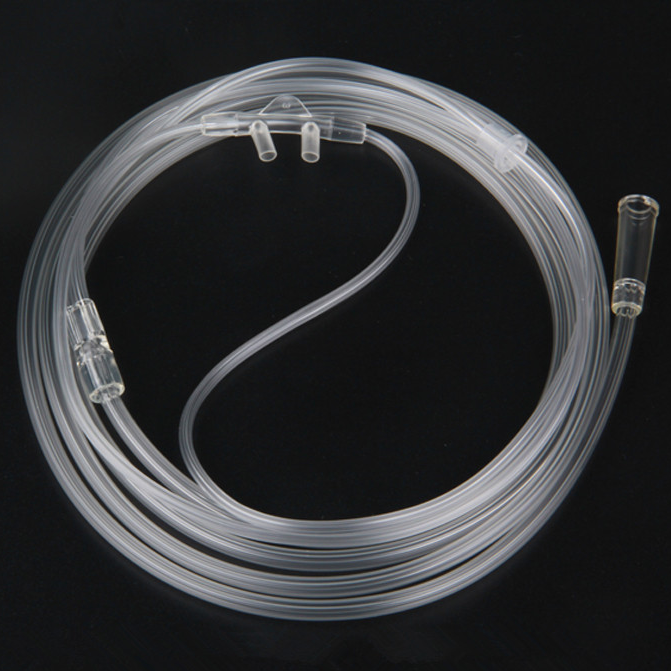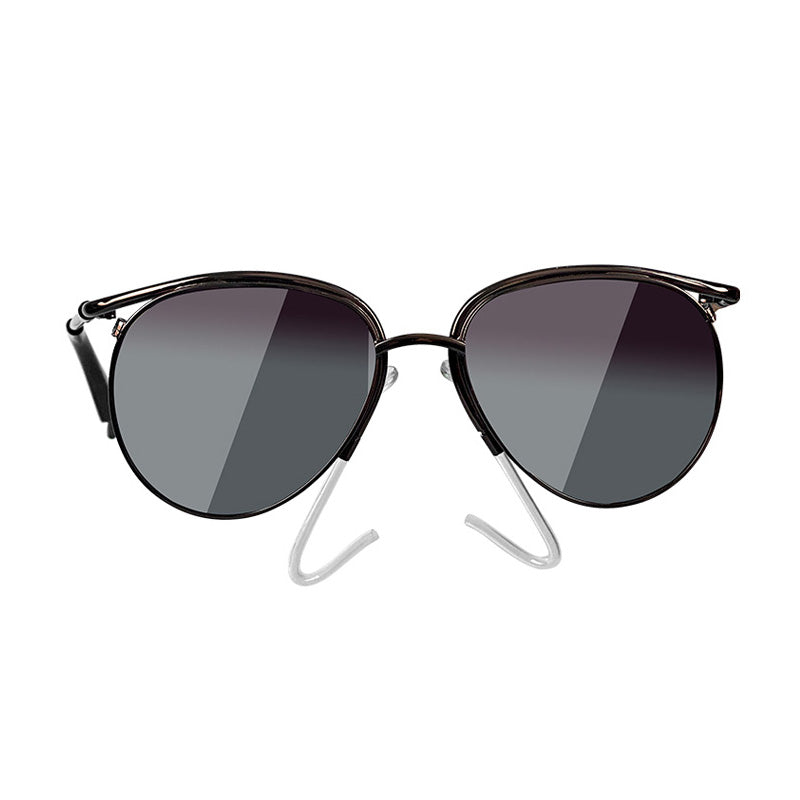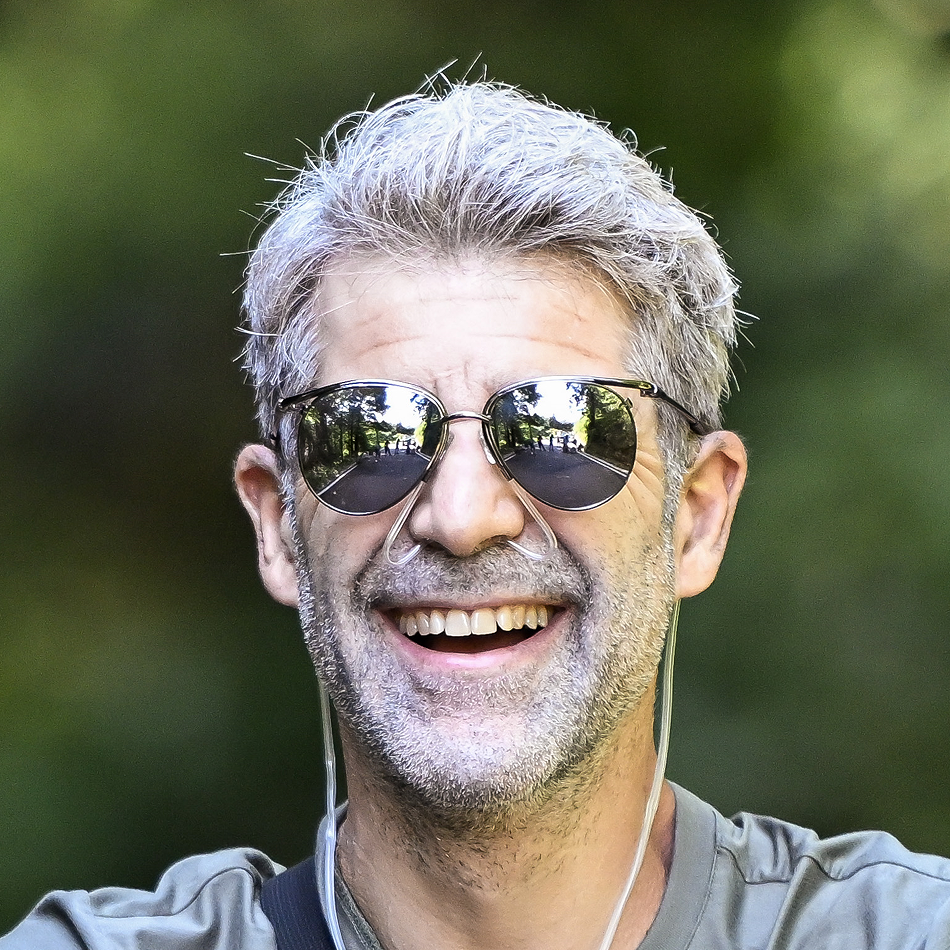Home Oxygen Concentrators
Φίλτρα
6 προϊόντα
(Black)
Product Information
How it Works
The Home Oxygen Concentrator utilizes pressure swing adsorption technology to filter nitrogen from ambient air and concentrate the remaining oxygen to therapeutic levels. The continuous flow model can deliver between 1 and 5 liters per minute of oxygen at concentrations up to 93% ± 3%, making it suitable for low to moderate oxygen needs. The higher-capacity model provides 1 to 10 liters per minute continuous flow with an oxygen purity of 90% + 5% / - 3%.
Quiet and Compact Design Optimized for Home Use
Several innovative design features make the Home Oxygen Concentrator stand out from competitors. Advanced noise reduction technologies limit sound levels to around 45 decibels at a distance of one meter on a flat surface - significantly quieter than similar devices. With a weight of only 15 kilograms, it is one of the lightest 5-liter-per-minute concentrators available. This combination of low noise and compact size suits it to home and travel environments.
Enhanced Reliability
The Home Oxygen Concentrator was engineered for enhanced reliability and durability. It can operate at altitudes up to 3,657 meters, delivering consistent performance even in mountainous regions. The output pressure is adjustable from 58.6 to 144.7 kilopascals, accommodating a wide range of flow rate needs. The device is backed by a two-year warranty for added peace of mind.
User-Centric Design
Thoughtful design touches improve the user experience. Straightforward controls allow for simple operation. Its compact 36.8 by 34.2 by 57.2-centimeter size minimizes footprint. An integrated handle enables easy portability, while an external air intake helps reduce noise. An optional lithium-ion battery can provide over two hours of cordless operation for improved mobility.
Who Can Benefit
For individuals requiring supplemental oxygenation at home or during travel, the Home Oxygen Concentrator provides an advantageous balance of performance, convenience, and reliability. Clinical studies have demonstrated that consistent oxygen therapy can improve outcomes in chronic respiratory illnesses like COPD, asthma, and pulmonary fibrosis. This concentrator empowers users to enhance their quality of life through access to enriched air.
FAQ about Home Oxygen Concentrators
How to Treat Low Oxygen Levels at Home
Patients should use the prescribed flow rate as advised by their pulmonologist or primary care physician. The settings are typically adjustable from 1-5 liters per minute to meet each patient's needs. Consistency is key - patients should strictly adhere to the recommended daily schedule. Proper positioning of the nasal cannula is crucial for patient comfort and ideal oxygen delivery. The prongs insert into the nostrils, with the tubing resting comfortably behind the ears. Patients should remain in close proximity to the concentrator during therapy. Regular replacement of air intake filters is advised to maintain concentrator efficiency. Adding a humidifier reduces airway dryness, another important factor for compliance.
How to Increase Oxygen Levels at Home
Pursed-lip breathing, deep belly breathing, elevating the head of the bed, staying hydrated, light physical activity, and adjunct devices like CPAP machines all have synergistic effects with oxygen concentrators. Combination therapy under medical guidance is key to improving hypoxemia.
What Are the Side Effects of Oxygen Therapy at Home?
Nasal abrasions, congestion, mucus production, ear pain from tubing pressure, and skin irritation are possible but can often be mitigated by using humidification, repositioning and lubricating the cannula, and switching to padded tubing. Maintaining the concentrator with fresh filters reduces irritants. Weaning off oxygen under supervision when clinically appropriate also prevents dependence. Patients should alert their doctor about any bothersome side effects.
How Does a Home Oxygen Concentrator Work?
Oxygen concentrators use a technology called pressure swing adsorption to remove nitrogen from room air and provide purified oxygen:
- Air is drawn in through an intake filter, which traps large particles.
- The air passes through a compressor, which pressurizes it.
- Pressurized air enters specialized tubes filled with zeolite pellets.
- As air moves through the zeolite, nitrogen molecules are trapped while oxygen passes through.
- This oxygen is collected, concentrated, and delivered to the user through a nasal cannula.
- The rapid pressure cycling allows each zeolite tube to trap nitrogen while regenerating the other tubes. This enables continuous production of oxygen up to 95% purity.
- A pulse flow mode uses a sensor to detect when you inhale and delivers a pressurized oxygen pulse only during inhalation. This conserves oxygen while still providing therapeutic benefits.
Free shipping
3 to 5 days by DHL express, UPS express, Fedex express
Customer service
Call to Speak to an Oxygen Specialist: +1 (678) 895 2303
Secure payment
7 days free trial and payment return in 24 Hours


